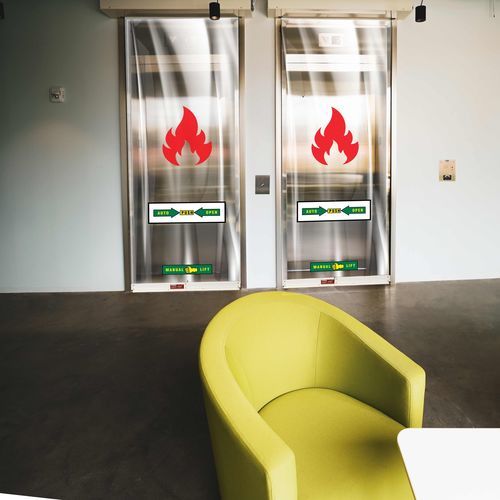During a fire, elevator shafts become internal funnels. They draw smoke through a building and feed flames with oxygen. Occupants and property are at a greater risk without a smoke containment system. These tools effectively seal off hoistways, limiting harmful smoke infiltration.
Innovative Cornell engineers developed the SmokeShield® Elevator Smoke Curtain to prevent smoke and hot gases from entering elevator shafts. Our award-winning solution comes from almost a century of crafting fire safety and protection products.
A Reliable Elevator Smoke Curtain That Seals After Every Use
Elevator shafts are among the most vulnerable areas of a multistory structure in the event of a fire. Without effective smoke barriers installed, elevator shafts can quickly become funnels that allow smoke and dangerous gases to travel between floors, causing damage to the building and placing people at risk. The SmokeShield® Elevator smoke curtain prevents that from happening. This smoke curtain uses our patented GuideLock™ technology to seal the shaft after each cycle 100% of the time, containing smoke to the affected area to prevent damage.
What Is a Smoke Containment System?
Smoke containment systems — often called elevator smoke curtains — form part of a fire safety plan in multistory residential and commercial buildings. They automatically deploy in case of fire to prevent harm to occupants and reduce property damage.
Where Are Elevator Smoke Curtains Required?
The International Building Code (IBC) requires buildings with elevators to have methods for sealing them off in a fire. Solutions like SmokeShield Elevator ensure the construction of elevator lobbies that follow the IBC.


